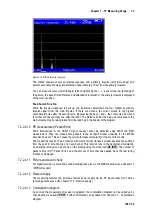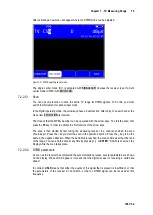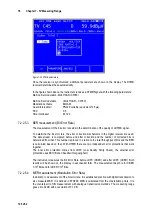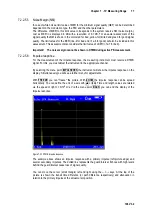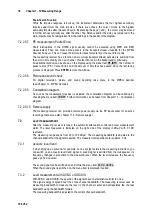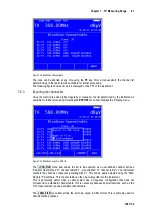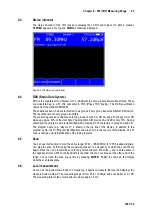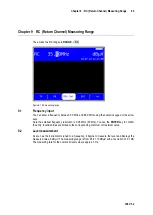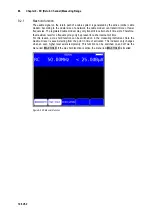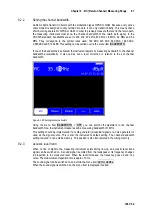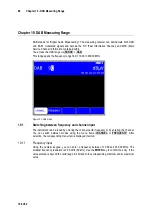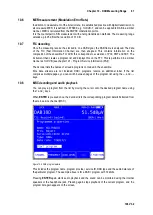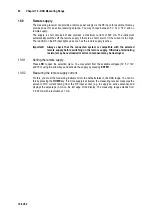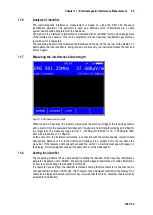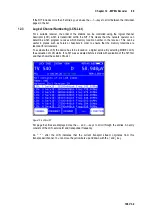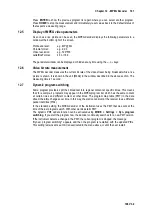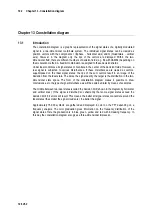
Chapter 9 - RC (Return Channel) Measuring Range
87
106 V3.2
Setting the channel bandwidth
9.2.2
Cable modems transmit in bursts with the modulation types QPSK or QAM. Because every active
cable modem is assigned to only certain time slots, it can only transmit briefly. This means that a
short burst is generated in QPSK or QAM. In order to precisely measure the level in the return path,
the measuring instrument must know the channel bandwidth of the return path signal. In the
DOCSIS standard, bandwidths are set to 200 kHz, 400 kHz, 800 kHz, 1.6 MHz, 3.2 MHz and 6.4
MHz. They correspond to the symbol rates used: 160 kBd, 320 kBd, 640 kBd, 1,280 kBd,
2,560 kBd and 5,120 kBd. This setting can be carried out via the menu item
BANDWIDTH
.
If one of the bandwidths is activated, the instrument adjusts its measuring bandwidth to the channel
bandwidth automatically. It also carries out a level correction in relation to the set channel
bandwidth.
Figure 9-3 RC Setting channel bandwidth
Using the menu item
BANDWIDTH
->
OFF
, you can switch off adjustment to the channel
bandwidth. Now the instrument measures with a measuring bandwidth of 1 MHz.
This setting should be implemented if a comb generator (sinusoidal signal) or a noise generator is
used as the signal source. This is also the instrument’s default setting. The channel bandwidth
setting is stored in non-volatile memory. This position is also incorporated in the tuning memory.
Acoustic level trend
9.2.3
When no line of sight to the measuring instrument exists during line-up, an acoustic level trend
signal can be switched on. A sound signal is emitted from the loudspeaker. Its frequency changes
in proportion to the measured level. When the level increases, the frequency goes up and vice
versa. The measurement repetition rate is approx. 10 Hz.
The sound signal can be switched on and off via the menu item
ACOU. LEVEL
.
When the sound signal is switched on, the menu item is displayed inverted.

